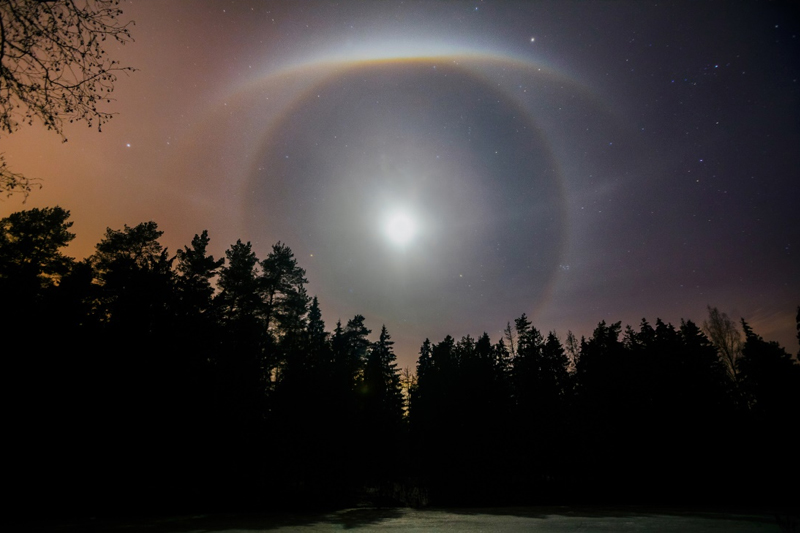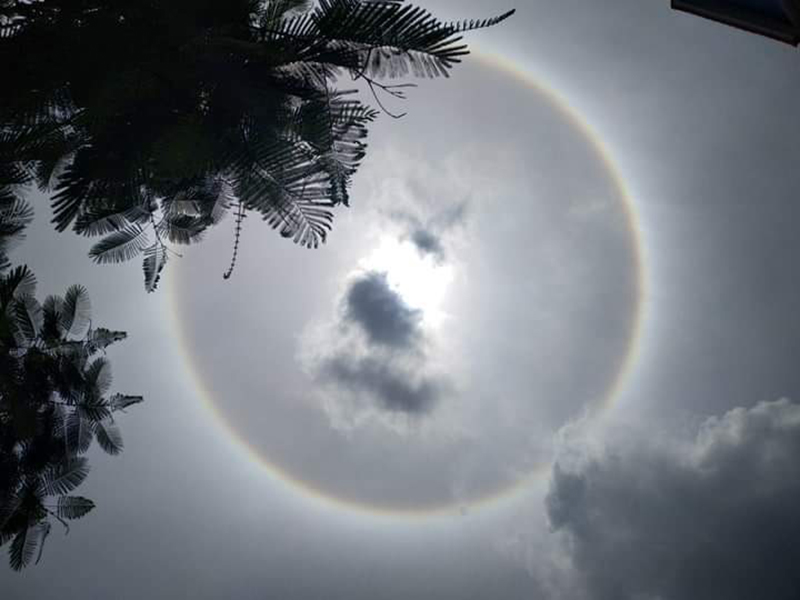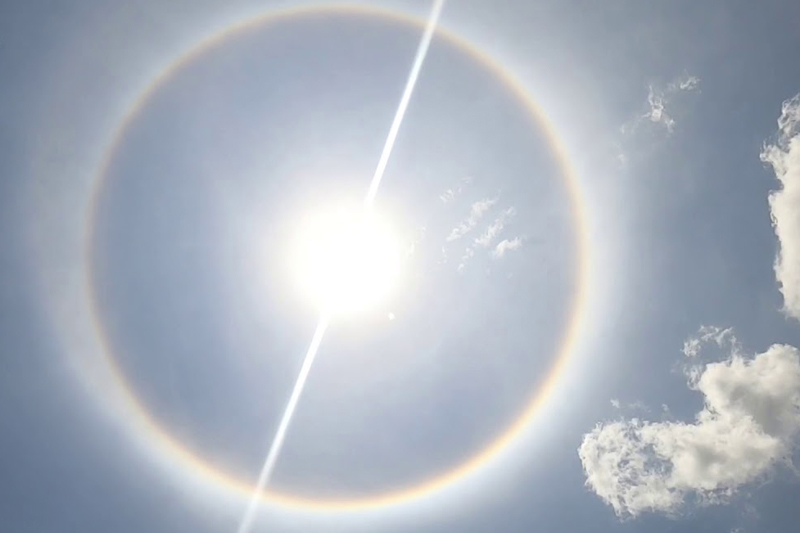The Sun halo is a natural optical phenomenon that occurs when light is refracted at a 22-degree angle, often visible when a thin layer of clouds is present in the sky, causing sunlight to refract and create a halo effect.
 The Sun halo as captured by us
The Sun halo as captured by us
1 What is a Sun halo or Sun ring?
The Chairman of the Vietnam Astronomy Association – VACA stated: “This is a 22-degree halo phenomenon. This optical phenomenon occurs in the Earth’s atmosphere near the Sun or Moon disk when the weather is very dry with little moisture, and the upper atmosphere has a low density of ice crystals (water ice). Light from the Sun or Moon, when entering the atmosphere and passing through these hexagonal crystals, is refracted, creating an effect similar to that of a diverging lens. This forms a white ring with a radius of about 22 degrees (a diameter of 44 degrees) around the luminous disk. This phenomenon is commonly observed with the Moon and less frequently with the Sun.”

Regarding the Moon’s halo, because it occurs when the air is dry and less humid, the Vietnamese have a saying, “When the Moon has a halo, it foretells dry weather, and when it has a crown, it foretells rain.” In this context, the halo refers to the 22-degree halo of the Moon. Although less common, a Sun halo is not a rare or mysterious phenomenon and is not a sign or omen of any event. Nature photographers often capture fascinating images when this phenomenon occurs around the Sun’s disk.
According to scientists, this phenomenon can appear in various colors, depending on factors such as time, water vapor, and dust in the atmosphere. As a result, people in different locations may observe the Sun halo in different colors.
 The Sun halo as captured by us
The Sun halo as captured by us
2 Let’s take a look at some images of the Sun halo from today.
 Sun halo
Sun halo
 Sun halo
Sun halo
 Sun halo
Sun halo
Previously, a Sun halo was also observed in several locations, including Hoi An, Hue, and Danang, in late April.
 Sun halo
Sun halo
This is considered an interesting optical phenomenon, and according to scientists, it indicates the likelihood of rain as cloud accumulation, combined with hot weather, can lead to increased evaporation and subsequent rainfall in the area.
































